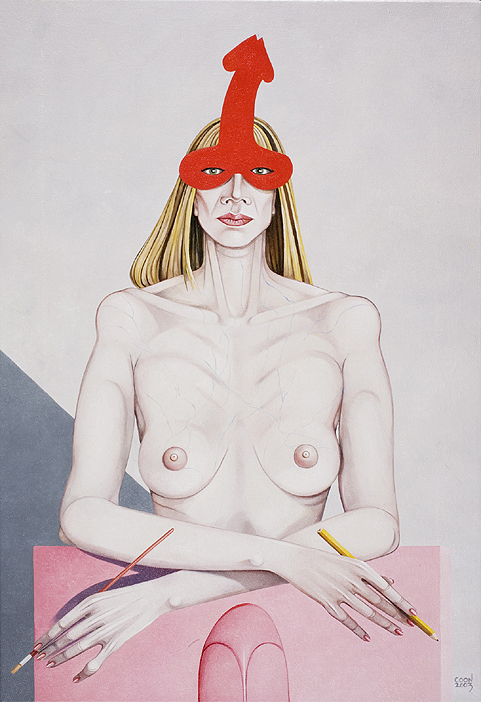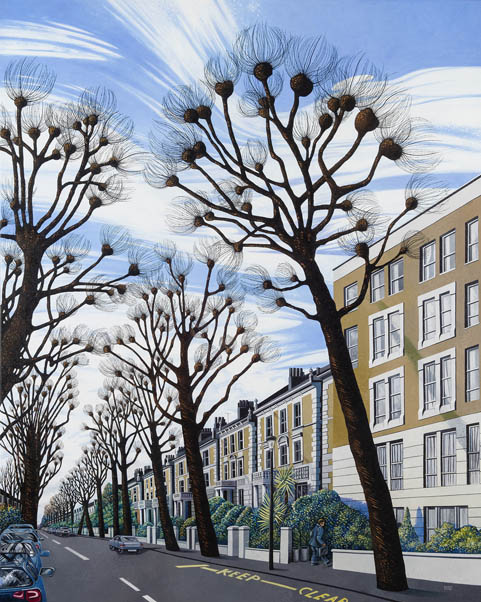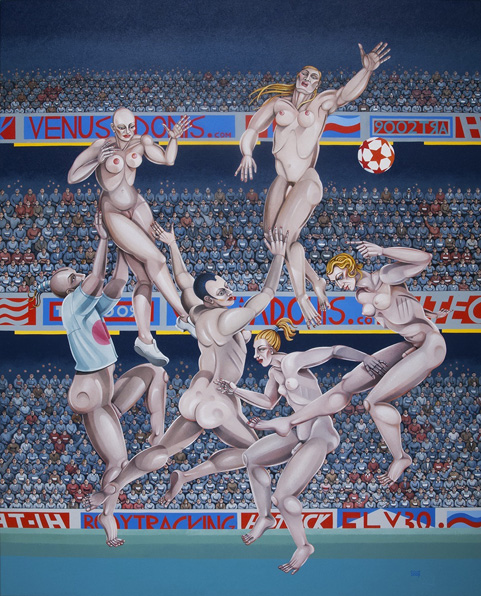As the group exhibition, Sensitive Content, draws to a close at the end of this week, we focused on some of the show’s artists and their careers. Here, we are concentrating on Caroline Coon. Active in the counterculture movement since the 1960s, Coon’s artworks have been inspired by feminism and the politics of sexual liberation.
What is Caroline Coon known for?
Coon initially trained as a figurative painter and became involved in the underground movement in the 1960s while studying at Central Saint Martins in London. In 1967, Coon founded RELEASE, a 24-hour welfare service to help young people who had been arrested for drug offences. Its clients included John Lennon and George Harrison. Coon was also central in London’s punk scene, managing the band The Clash from 1978 to 1980. She even created the artwork for the cover of the band’s debut single, White Riot. In life and art, Coon has asserted herself against the status quo, creating artworks that subvert common tropes and protesting the criminalisation of sex work and drugs. In 1995, Tate Liverpool refused to display her painting, Mr Olympia, in a group exhibition. The artwork, a pastiche of Manet’s Olympia, featured a male figure with a semi-erect penis and was therefore removed from the exhibition. Coon has been dubbed “The Woman Who Paints Penises”, a nickname that stems from her unabashed and unashamed representation of the naked male figure.

Caroline Coon and Feminist Art
Coon’s works are well known for their examination of feminist themes and their inversion of sexual stereotypes. Coon’s “Brothel Series”, which she has been working on since 1987, is inspired by her brief time as a sex worker in the 1980s. Looking to the legacy of canonical male artists such as Manet, Toulouse-Lautrec, Degas and Picasso, Coon examines the hierarchy between sex workers and their customers. As a woman artist, she inserts herself into a space traditionally occupied by male artists. Coon’s works aim to reclaim the brothel space by challenging conventional depictions of female sex workers, viewing the subject matter through a feminist lens. In the painting Cambridge Gardens: On Anywhere Street He Slips Unnoticed (2013/14), a seemingly innocuous row of houses is punctuated by a lone male figure, slipping quietly into a residence. The situation here can easily be inferred from the painting’s title, which subtly comments on the privileges of privacy afforded to men. Here, Coon flips the perspective of a well-known narrative, focusing the viewer’s attention not on the female sex worker but on the male customer, questioning who might be deserving of our judgement.

Caroline Coon: The Great Offender
In 2018, when she was 73 years old, The Gallery Liverpool offered Coon her first solo exhibition, comprising artworks that dated from the 1990s to 2017. The exhibition spoke to Coon’s roots in counterculture, bringing her largest feminist artworks to the public’s attention. The paintings explored figures of ambiguous gender engaged in sports and everyday activities, while confronting patriarchal structures and the rigidity of the gender binary. Coon also included multiple paintings from her “Brothel Series” that explicitly called out violence against women. The artist’s self-portrait, now part of the Tate’s permanent collection, was central to the exhibition. Unashamedly representing her own body, Coon draws attention to the lack of representation of older women. The striking image of Coon, posing naked and clasping a delphinium flower, marked a moment in which the artist positioned herself in a lineage of great female artists.
